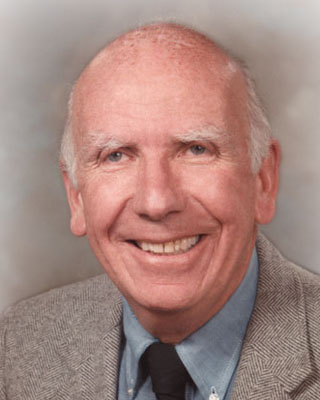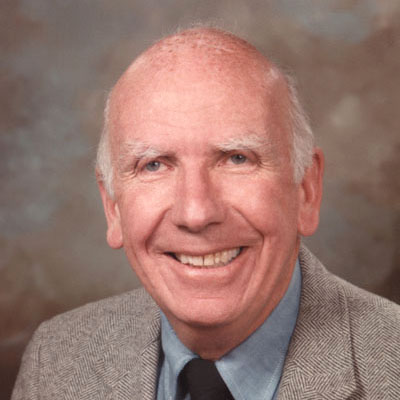By Walter Zürn
Schiltach Observatory
Leon Knopoff passed away on January 20, 2011 at his home in Sherman Oaks, California in the presence of his family from the consequences of lung problems. Age 85, he was up to that time active in several research projects with colleagues and is unfortunately now not able himself to bring these to final conclusions.
First he studied electrical engineering at Caltech up to a bachelor’s degree and switched then to physics at the same school, where he finished with the Master of Science in 1946 and the PhD in 1949. Subsequently Louis Slichter invited him to the Institute of Geophysics and Planetary Physics (IGPP) at the University of California, Los Angeles (UCLA), where he was promoted to Associate and to Full Professor in 1957 and 1960, respectively. A little later he was named professor of physics at UCLA. In addition, he worked as a research musicologist. He held these positions at UCLA until his retirement in 1995, but continued to work at the IGPP until 2010. He was very much liked as a guest professor and enjoyed it, thus he held such positions successively at Karlsruhe (with Stephan Müller, 1966), Harvard, Chile, Trieste, Cambridge (UK), Venice, Beijing, Strasbourg, repeatedly at several of these universities.
During this time, 38 students successfully finished their dissertations with him. From the whole world (Armenia, Chile, China, Costa Rica, Denmark, Germany, France, Greece, Great Britain, India, Iran, Israel, Italy, Japan, Canada, Mexico, Netherlands, Switzerland, Taiwan, USA, USSR, Vietnam), 40 young scientists came to UCLA to work with Leon Knopoff on the most different questions. The spectrum of his research interests and his original contributions is very, very broad: among others theory of seismic sources, theory of shock waves, equations of state of the Earth’s interior, diffraction theory and its application to the scattering of seismic waves by the Earth’s core, observation and interpretation of the velocities of seismic surface waves and the inversion of such results to regional differences in the structure of crust and mantle, new approaches to spectral analysis, improvements in the interpretation of free mode observations, attenuation of seismic waves, invention of the spring-mass model which is still used today in many simulations of earthquakes, earth tide measurements at the geographic South Pole, theoretical developments on fracture propagation, different approaches to earthquake statistics, nonlinear dynamics in the context of earthquakes, research in earthquake prediction, development of the thermoluminescence method for dating of archaeological objects, and research in musicology. He is author and coauthor of more than 380 scientific papers and (co-)edited five books. His works most frequently cited now by colleagues concern the theoretical derivation of the equivalence of seismic dislocations with body forces (with R. Burridge: BSSA, 54 (1964), S. 1875) and (also with R. Burridge: BSSA, 57 (1967), S. 341) the "spring-mass"-model for seismicity.
Leon Knopoff himself has often smilingly pointed out that he wrote the papers with the shortest title ("Q", Rev. Geophys. 2 (1964), S. 625), with the shortest abstract "Yes" as answer to the question in the title: "Is the sequence of earthquakes in southern California, with aftershocks removed, Poissonian?" (with J. K. Gardner: BSSA, 64 (1974), S. 1363), and the paper with the probably longest word in the title ("Gruppengeschwindigkeitsmessungen", with Götz Schneider and Stephan Müller: Zeitschrift f. Geophysik, 32 (1966), S. 33). Remarkable to me is the joint publication by two winners of the Emil Wiechert Medal of the DGG (Wielandt & Knopoff, JGR 87 (1982), S. 8631).
Leon Knopoff held many positions. The most important are: secretary general of the International Upper Mantle Project, vice president of the IGPP of the University of California, vice president of the committee for mathematical geophysics of the IUGG, president of the committee for IASPEI, etc.
 L E O N K N O P O F F ____________________________________________________________________________________________________________
L E O N K N O P O F F ____________________________________________________________________________________________________________
